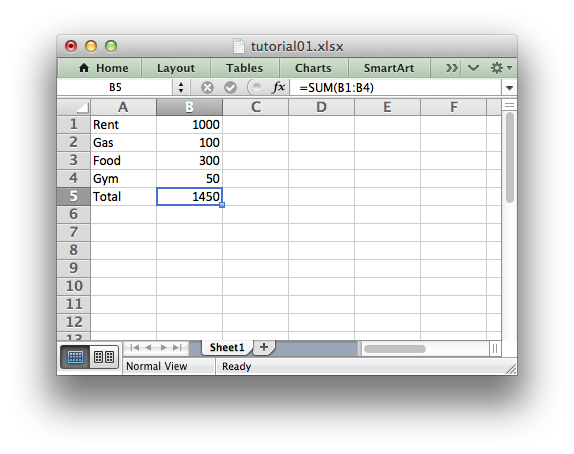Context: If you search on google Working with Excel Files in Python, you could see openpyxl, xlsxwriter, xlrd, xlwt
and your purpose is read/write data Excel on python
Maybe, you must take a lot of time for choosing which package. For this repo, I hope I could help you to choose what package to read/write excel.
openpyxlincludes read/write features of 2 package (xlsxwriter+xlrd) and I think using one single package will be easier to handle/maintain the code.- I'll choose
openpyxlpackage to write/read excel file.
- I feel that xlsxwriter's simple, very easy to write, good at formatting.
- I can write and work nearly normal excel (MS).
- Odoo framework's used to make for reporting module for many version until now.
- This package for reading data and formatting information from Excel files (xlsx, xls).
- It write and make data to excel file similar to
xlsxwriter. - It write to existing excel file,
xlsxwritercan't do it. - It read excel file similar to
xlrd.
-
This package for writing data, formatting information in particular, charts in the Excel 2010 format
-
It supports Python 2.7, 3.4+
-
Document: https://xlsxwriter.readthedocs.io.
-
Significant features:
- Full formatting (Conditional formatting, Rich multi-format strings)
- Autofilters.
- Merged cells.
- Data validation and drop down lists.
- Worksheet PNG/JPEG/BMP/WMF/EMF images.
- Easy writing different types of data (https://xlsxwriter.readthedocs.io/tutorial03.html)
- Memory optimization mode.
write_formula
-
Code example:
import xlsxwriter
# Create an new Excel file and add a worksheet.
workbook = xlsxwriter.Workbook('demo.xlsx')
worksheet = workbook.add_worksheet(worksheet_name) # Defaults to Sheet1
# Add a bold format to use to highlight cells.
bold = workbook.add_format({'bold': True})
# Add a number format for cells with money.
money = workbook.add_format({'num_format': '$#,##0'})
# Some data we want to write to the worksheet.
expenses = (
['Rent', 1000],
['Gas', 100],
['Food', 300],
['Gym', 50],
)
# Start from the first cell. Rows and columns are zero indexed.
row = 0
col = 0
# Iterate over the data and write it out row by row.
for item, cost in (expenses):
worksheet.write(row, col, item)
worksheet.write(row, col + 1, cost)
row += 1
# Write a total using a formula.
worksheet.write(row, 0, 'Total')
worksheet.write(row, 1, '=SUM(B1:B4)')
workbook.close()- This package for reading data and formatting information from Excel files (xlsx, xls)
- It supports Python 2.7, 3.4+
- Document: https://xlrd.readthedocs.io/en/latest/
- Significant features:
- Handling of Unicode
- Dates in Excel spreadsheets
- Named references, constants, formulas, and macros
- Formatting information in Excel Spreadsheets
- Loading worksheets on demand
- XML vulnerabilities and Excel files
- API Reference
- Code example:
import xlrd
book = xlrd.open_workbook("your_path_file.xls")
print("The number of worksheets is {0}".format(book.nsheets))
print("Worksheet name(s): {0}".format(book.sheet_names()))
sh = book.sheet_by_index(0)
print("{0} {1} {2}".format(sh.name, sh.nrows, sh.ncols))
print("Cell D30 is {0}".format(sh.cell_value(rowx=29, colx=3)))
for rx in range(sh.nrows):
print(sh.row(rx))- Reading excel file and returning list of dictionary example:
import xlrd
COLUMN_MAPPING = {
'Column Name A1': 'mapped_key_a1',
'Column Name A2': 'mapped_key_a2',
}
wb = xlrd.open_workbook("your_path_file.xlsx")
ws = wb.sheet_by_index(0)
raw_headers = [cell.value for cell in ws.row(0)]
v_fields = [ COLUMN_MAPPING.get(h.strip()) for h in raw_headers ]
col_count = len(raw_headers)
returning_data = []
for ri in range(1, ws.nrows): # ri aka row_index - we skip the 0th row which is the header rows
values = [ ws.cell_value(rowx=ri, colx=ci) for ci in range(col_count) ] # ci aka column_index
rvr = dict(zip(v_fields, values))
returning_data.append(rvr)
return returning_data- This package for reading and writing Excel files
- It supports Python 2 and 3
- Document: https://openpyxl.readthedocs.io/en/stable/index.html
- Code example for writing a new excel file:
from openpyxl import Workbook
wb=Workbook()
filepath="/home/ubuntu/demo.xlsx"
sheet=wb.active
data=[
('Id','Name','Marks'),
(1,ABC,50),
(2,CDE,100)
]
# append all rows
for row in data:
sheet.append(row)
# save file
wb.save(filepath)- Code example for writing a existing excel file:
from openpyxl import load_workbook
wb = load_workbook(existing_filepath)
ws = wb.active
max_row = ws.max_row ## get max_row to write new rows from end row
for row in data_to_write:
for i in range(1, len(row) + 1): ## write each cell from first col of max_row + 1
cell = ws.cell(row=max_row + 1, column=i)
cell.value = row[i - 1]
max_row += 1 ## add 1 to write a new row
wb.save(existing_filepath)- Code example for reading a excel file:
from openpyxl import load_workbook
filepath="/home/ubuntu/demo.xlsx"
wb=load_workbook(filepath)
sheet=wb.active
max_row=sheet.max_row
max_column=sheet.max_column
# iterate over all cells
for i in range(1, max_row+1):
for j in range(1, max_column+1):
# get particular cell value
cell_obj=sheet.cell(row=i, column=j)
# print cell value
print(cell_obj.value, end=' | ')- Code example for formatting:
from openpyxl.writer.dump_worksheet import WriteOnlyCell
filepath="/home/ubuntu/demo.xlsx"
wb = Workbook(optimized_write=True)
ws = wb.create_sheet()
user_style = Style(font=Font(name='Courrier', size=36))
cell = WriteOnlyCell(ws, value='hello')
cell.style = user_style
ws.append([cell, 3.14, None])
wb.save(filepath)
# assert user_style in wb.shared_styles
wb2 = load_workbook(filepath)
ws2 = wb2[ws.title]
assert ws2['A1'].style == user_style - Install pyenv for mac:
# Install Homebrew if it isn't already available
/usr/bin/ruby -e "$(curl -fsSL https://raw.githubusercontent.com/Homebrew/install/master/install)"
brew install pyenv
# Add pyenv initializer to shell startup script
echo 'eval "$(pyenv init -)"' >> ~/.bash_profile
source ~/.bash_profile # Reload your profile
pyenv versions
- Install pyenv for ubuntu:
sudo apt update -y
sudo apt install -y make build-essential libssl-dev zlib1g-dev libbz2-dev \
libreadline-dev libsqlite3-dev wget curl llvm libncurses5-dev libncursesw5-dev \
xz-utils tk-dev libffi-dev
git clone https://github.com/pyenv/pyenv.git ~/.pyenv
echo 'export PYENV_ROOT="$HOME/.pyenv"' >> ~/.bashrc
echo 'export PATH="$PYENV_ROOT/bin:$PATH"' >> ~/.bashrc
echo -e 'if command -v pyenv 1>/dev/null 2>&1; then\n eval "$(pyenv init -)"\nfi' >> ~/.bashrc
# restart shell & aftermath check
exec "$SHELL"
pyenv --version
- Install python 3.6.7
pyenv install 3.6.7
pyenv global 3.6.7
python --version # should be 3.6.7
- Install pipenv
# install pipenv
curl https://raw.githubusercontent.com/kennethreitz/pipenv/master/get-pipenv.py | python
echo "
# pipenv setup" >> ~/.bashrc
echo 'export PATH="~/.local:$PATH"' >> ~/.bashrc
echo 'export PIPENV_VENV_IN_PROJECT=1' >> ~/.bashrc # project's venv location will be in the project folder as .venv ref. https://pipenv.readthedocs.io/en/latest/advanced/#pipenv.environments.PIPENV_VENV_IN_PROJECT
echo 'export PIPENV_DEFAULT_PYTHON_VERSION=3.6.7' >> ~/.bashrc # project's venv location will be in the project folder as .venv ref. https://pipenv.readthedocs.io/en/latest/advanced/#pipenv.environments.PIPENV_VENV_IN_PROJECT
echo 'eval "$(pipenv --completion)"' >> ~/.bashrc # shell auto-completion ref. https://pipenv.readthedocs.io/en/latest/advanced/#shell-completion
#restart shell & aftermath check
exec "$SHELL"
pipenv --version
cdtoyou_project_pathand runpipenv syncto install all dependencies of project.
cdtoyou_project_pathand runpipenv run pytest
